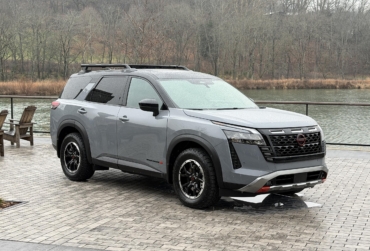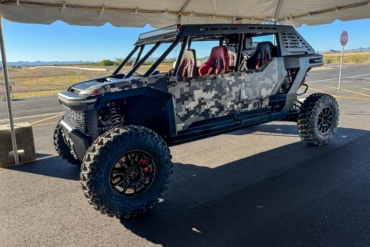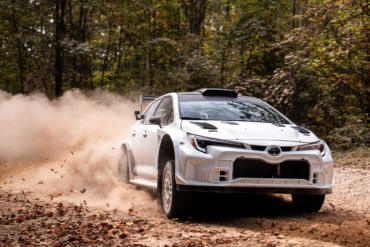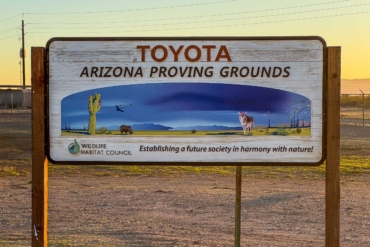One of the best off-road SUVs on the market has some pretty solid strengths but is not without its faults.
The Toyota 4Runner — specifically the TRD Pro — was always at the top of our potential “next vehicle” list. My wife and I had outgrown our 2015 Subaru XV Crosstrek with the arrival of our son. And when the pandemic postponed our need to immediately replace it, we took our time to sort out exactly what vehicle we wanted next.
Sure, there were some other SUVs in contention, but ever since the Toyota 4Runner TRD Pro debuted back in 2015 in Inferno Orange, my wife and I had our eyes on it. It even become a bit of a game, pointing them out when one passed us on the road: “Oh look, TRD Pro.”
Eyeing the 4Runner from the beginning was helpful in our final decision, but I want to take you through the reasons the 4Runner TRD Pro excels — and touch on a few of the features that I found were lacking. And, yes, we bought one as my wife’s daily driver.
2022 Toyota 4Runner TRD Pro: Great On- and Off-Road
If I were to guess, I would estimate 50% of TRD Pro trim-level 4Runners will never see a trail in their lifetime. 4Runner enthusiasts might hate that callout, but honestly, most owners will enjoy the supple suspension, commanding driving position, and aggressive presence of the TRD 4Runner in their everyday on-road lives.

The Toyota 4Runner, no matter the generation, is well-respected as a capable off-road/overland vehicle. While our 4Runner isn’t going to be on weekend overlander rig duty often, since it’s my wife’s daily driver, my intention is definitely to get it off the pavement when I get the chance.
After experiencing firsthand what this vehicle can do off-road on some trails in Georgia on a press trip with Toyota, I can assure you that its off-road credentials are backed up in the real world.
The 2022 Toyota 4Runner TRD Pro features 4WD, a locking rear differential, Crawl Control, and Active Traction Control (A-TRAC). It also comes equipped with a visually appealing set of matte black TRD wheels wrapped in Nitto Terra Grappler all-terrain tires.

Perhaps the crown jewel upgraded feature on the 4Runner TRD Pro model is the FOX suspension. The front features some unique TRD-tuned springs wrapped around monotube FOX shocks, while the rear has FOX shocks with remote reservoirs.
So what does all this do for you on the road? Horrendous city roads filled with potholes? Don’t need to slow down. Train tracks? Don’t need to slow down. Speed bumps? Don’t really need to slow down (but please do, as most are there to protect pedestrians).
Everything that makes the 4Runner soak up rough terrain off the road makes it so much more couch-like to drive on the road.
True Old-School 4×4

The 4Runner TRD Pro definitely has its up-to-date creature comforts, but at its core, it’s an old-school body-on-frame SUV. This is becoming rarer and rarer, as unibody construction has become the norm.
A body-on-frame style SUV adds durability, giving the 4Runner’s chassis the strength to handle serious off-road terrain. It is also easier to modify — the aftermarket for the 4Runner is strong — than a unibody construction vehicle.
Body-on-frame vehicles do tend to weigh more, however, which reduces fuel economy, extends braking distances, lowers on-road cornering performance, and puts more wear and tear on consumables like brakes and tires.
You’ll find another nod to that old-school 4×4 style inside the 4Runner’s cabin. The 4×4 selector is an old-school stick instead of the buttons or dials you find in most of today’s vehicles. This feature is one I appreciate highly, as it just looks and feels more rugged and off-road capable — but I’m old-school like that.
Rugged, Aggressive Looks
All of its off-road capabilities are a bonus, but remember the 4Runner first caught our eye for its rugged looks. I hate chrome, and the only chrome accent is the rear 4Runner badge — which I quickly remedied with some matte black-out badges.

The 4Runner TRD Pro trim is the best-looking 4Runner trim, in my opinion. Owners of other 4Runner models often retrofit their Toyotas with bits of the TRD Pro, like the coveted heritage bumper with TOYOTA spelled out and the matte black TRD wheels.
Why go through this effort to be a TRD Pro clone? Because it just looks good. The difference is the TRD Pro comes with the off-road performance/capability parts list from the factory to back up its aggressive looks, versus a clone that just looks the part.
Reliability, Ease of Maintenance
This vehicle serves as my wife’s daily driver and family hauler. I didn’t want it to ever leave her and my son stranded on the side of the road. I wanted a solidly reliable vehicle. Additionally, easy maintenance was important to me since I planned to be the sole person maintaining the vehicle, even inside the warranty window.
Toyota is, of course, legendary for making high-quality vehicles that are both reliable and durable. Fingers crossed this reputation holds true once again with our 4Runner.

The 4Runner TRD Pro — or any 4Runner trim level, for that matter — offers tons of room to work in the engine bay. Oil changes are simple; the hardest part is removing the fancy but functional TRD skid plate.
Above all, underneath that fancy skid plate and its TRD Pro packaging, this vehicle is a Toyota 4Runner. With proper maintenance, it should get 250,000 miles with ease while yawning at the competition. And it should have relatively low maintenance costs along the way.
A Possible Investment
One of the best things about the TRD Pro trim level on the 4Runner has to be the value it holds. Currently, 4Runner TRD Pros with anywhere from 5k to 10k miles are selling for $15k to $20k over the original MSRP.
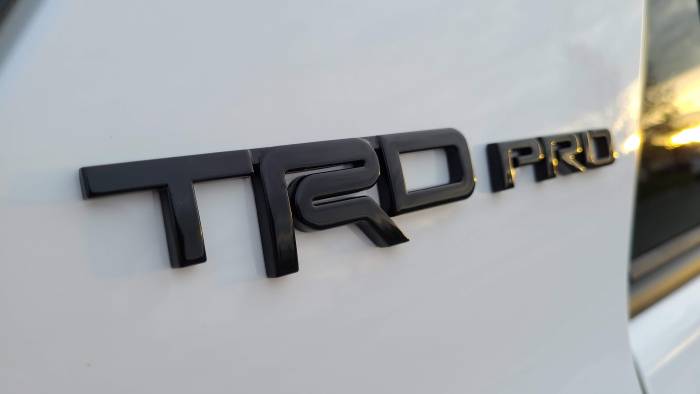
What that means is if you were to get a 4Runner TRD Pro at MSRP, you can drive it around for a long time and accumulate some miles before you start losing money. With the inflated prices of the current used car market, the “TRD Pro” name potentially gains value just by driving off the lot.
Pre-pandemic, 4Runners in the TRD Pro trim also held value very well, rarely dropping below $40k on the used market unless they had over 100k miles.
It Can’t All Be Good, Right?
Obviously, I invested in a 4Runner TRD Pro, so I think very highly of it, but it isn’t without its faults. Let’s switch gears and get into a few things that could be improved.

Real-World MPG … Not So Great
There isn’t much to be said here other than the gas mileage isn’t great. The 4Runner TRD Pro (along with the full 4Runner lineup) gets 16/19/17 mpg city/highway/combined. And, honestly, I am barely getting in the teens due to my in-town, pandemic-restricted driving versus my prior long commute to the office.
On the positive side, the gas tank is pretty big, and it survives on 87 octane.
Sub-300 Horsepower Is Adequate but Unimpressive

In terms of power, I think 300 horsepower is the sweet spot and really all you need on the road. More than that will have you constantly modulating the throttle to keep from getting a speeding ticket and less power will, quite simply, leave you wanting more.
That being said, I haven’t had an issue with the 270 horsepower of the 4Runner TRD Pro. My dream would be to see the V8 from the Lexus GX-series in the 4Runner TRD Pro, as the TRD Superchargers have been long discontinued.
I likely will not up the power on my 4Runner, as I can’t justify the cost of around $5,000 for an additional 70-80 horsepower in the form of a third-party supercharger.
Roof Rack Prioritizes Looks Over Functionality
I pride myself on being fully invested in the communities of vehicles I own. In the 4Runner community, true off-road enthusiasts who own 4Runner TRD Pros often immediately ditch the basic TRD Pro roof rack in favor of something a bit more functional.

For me, my family will likely use our 4Runner TRD Pro’s roof rack around once a year — namely to transport a Christmas tree home after we cut one down in the forest.
Personally, I think the factory roof rack adds to the TRD Pro look, and because our lifestyle doesn’t really need a more functional roof rack, I don’t plan to replace it. However, if it was a bit more functional and located toward the front of the roof, I would have likely added a lightbar.
4Runner TRD Pro Conclusions

Sure, the 4Runner TRD Pro offers poor fuel economy, a not-very-functional roof rack (I like the looks anyway), and not a ton of power. The good thing is that the aggressive looks, reliability, ease of maintenance, and its natural on/off-road old-school 4×4 nature outweighs anything negative going on with this machine for me.
The whole idea with buying the TRD Pro version of this SUV is to not have to upgrade much, as it’s ready to adventure straight off the showroom floor. If you want to buy a 4Runner and make it an off-road beast, you should just buy an SR5 version and then throw your credit card at it with aftermarket upgrades.
As for our family 4Runner TRD Pro adventuremobile, well, it will get a few accessories and upgrades over time, but honestly kept mostly stock. This machine is just right for my family’s needs as it is.
Yes, I’ll upgrade the tires when the stock ones wear out, going a smidge wider — by 10 mm — to help with its angry stance as well as help give it a bit more stability both on- and off-road. I’ll also be adding some traction boards for those “just in case” moments and potentially a lightbar, both for looks and nighttime adventures.

